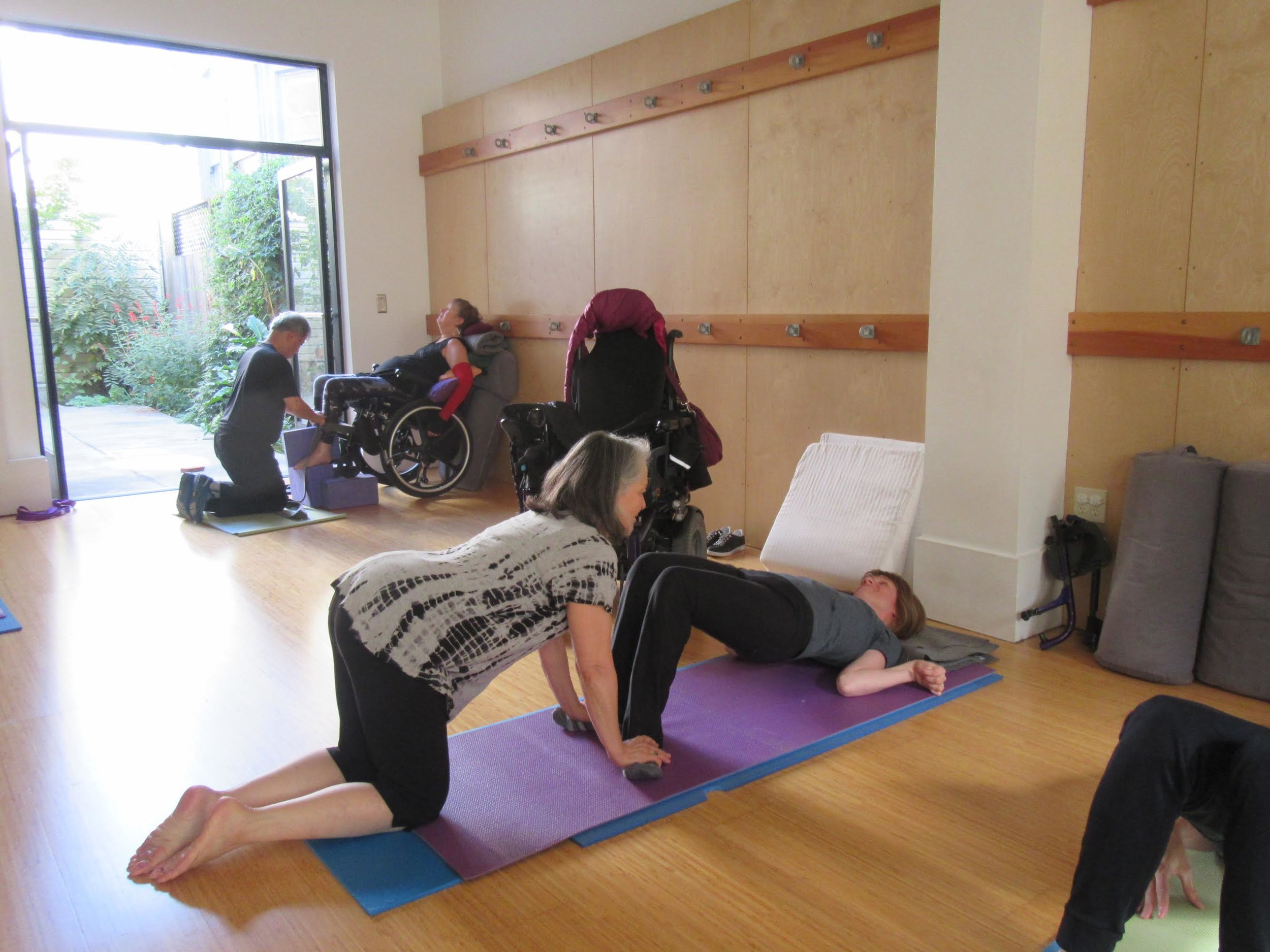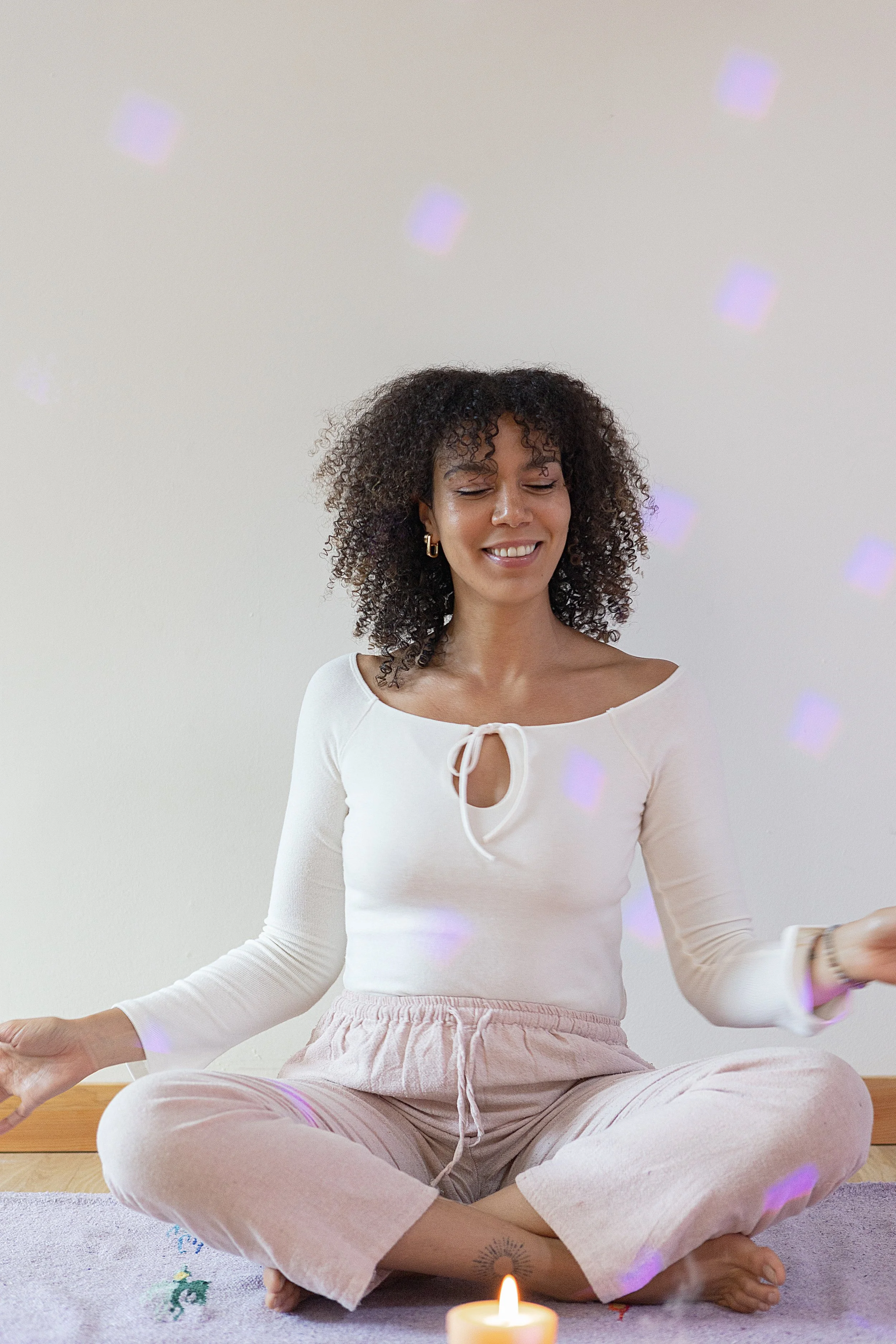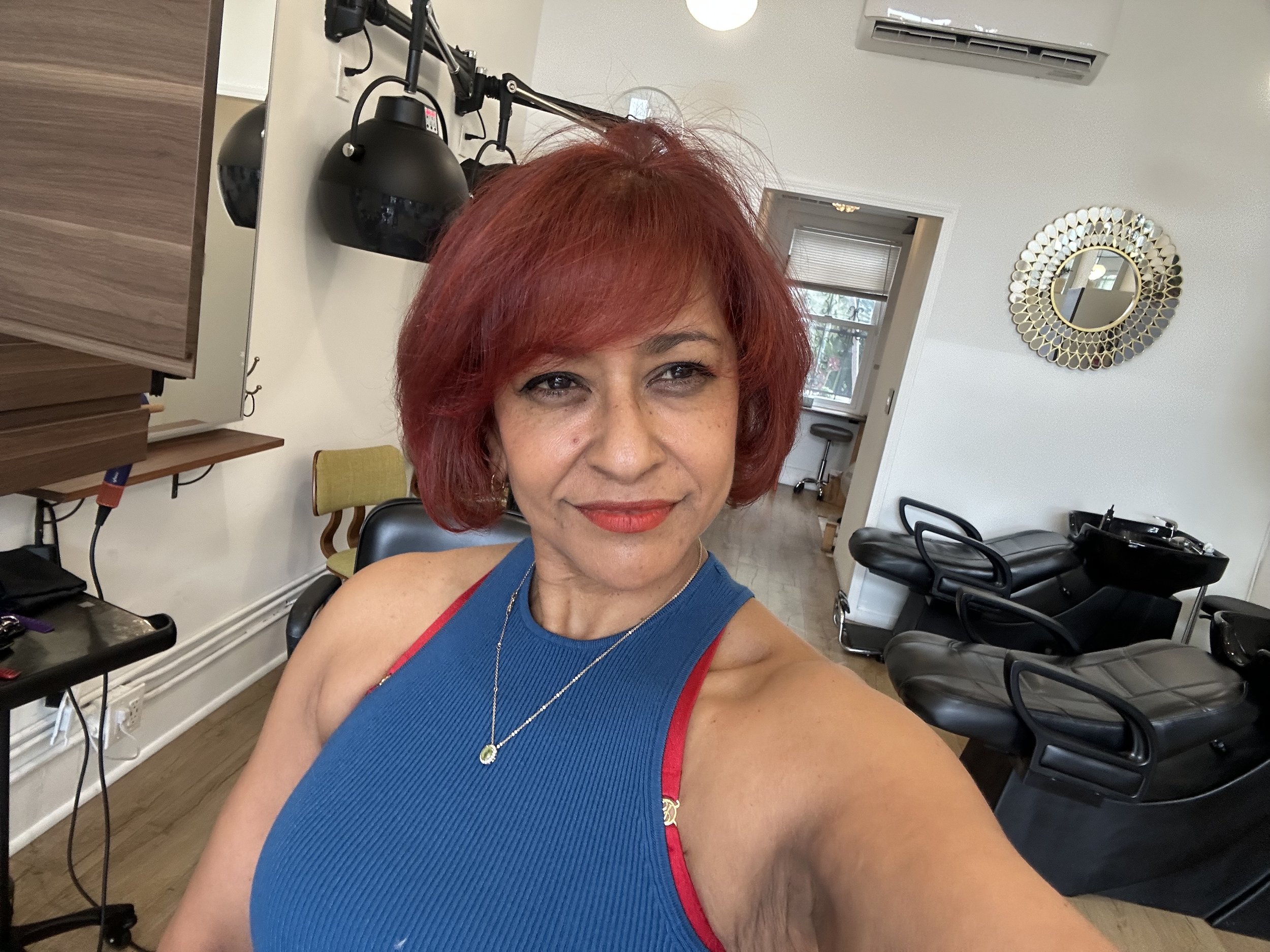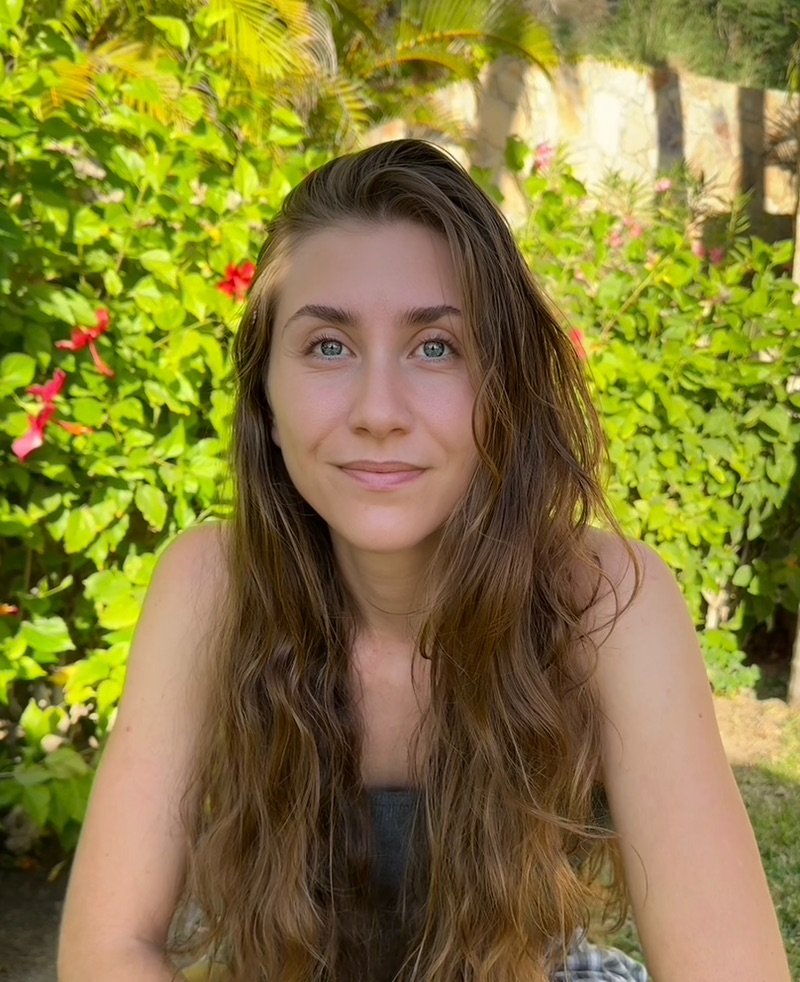
YOGA BLOG
What Moves Us…..
CLASSES FOR EVERYBODY BY JOANN LYONS
I’m guessing if you’re reading this, you love your yoga class! It’s something you count on and look forward to every week, knowing that you’ll not only learn something about your body or how to nail that perfect pose, but also that you’ll feel so much better after your class and spending time with other people of like mind. Finding strength, flexibility, relaxation in a pose, or even nailing that perfect pose is not the exclusive domain of able-bodied yogis, although sometimes it sure appears that way. Twenty, even ten years ago, it was the rare exception to find a class that was inclusive of the disability community; yoga studios, usually located upstairs, were not accessible. On April 1, 2001, Piedmont Yoga Studio opened its doors with an accessible studio on Piedmont Avenue and began offering classes for people with disabilities. My name is JoAnn Lyons and I was, and still am, the teacher of two classes each week that have lasted through ownership and name changes, as well as a new physical location of the studio. In order to provide a positive experience for students, I’ve been providing teacher trainings so that our students receive expert help when needed. Piedmont Yoga Community (PYC), a non-profit organization, was formed to support these classes, and to supplement payment to teachers for this important work, so the classes can be offered to our students on a sliding scale. These yoga classes for People with Disabilities are meant to be inclusive. No one is turned away because of race, color, creed, sexual orientation, gender identity, age, ability, disability or lack of ability to pay for the class. And therein lies the rub . . . PYC is asking for help from the local yoga community to support these classes. If you can make a one-time donation or, better still, commit to a monthly contribution, it would help PYC support this work. If you have other ways to help by donating your time and talent, please contact PYC. Here are some quotes from our students and assistants and their thoughts on how PYC has touched their lives.
“Thank you for your wonderful class and your generosity and devotion to a group of people with limited options and a need for all the help they can get . . .” Joel B.
“Thank you so much for doing this at an affordable rate . . .” ♥ Joan C.
“The class has helped me move closer to the life I desire – a life of being present, conscious and happy.” Patricia E. “In short, the class has a very cool vibe!” Melissa C.
“The community that inevitably develops in any class . . . keeps bringing me back.” Patrice W.
“Shared companionship and compassion before, during or after every class, making it very unique and gratifying.” Ramona A.
“I feel so safe at your Yoga classes. The amount of personal, individual attention each participant receives is extraordinary in my experience.” Marty S.
THE GARDEN: LIFE, DEATH AND PERSPECTIVE BY JODY HAHN
I love my garden. I love my garden so much. When I first planted it I watered diligently and watched closely to see how each plant was doing. I swear I went out to look at it about 10 times a day, maybe more. Many plants survived, some did not. That’s life and death in the garden, I guess. The ones that did survive now flourish; there is so much abundance it’s crazy, and to that abundance flock many other creatures. I see them around my garden vying for their bit of life: I watch, joyfully, as the birds, bees and butterflies travel around getting what they need to survive. And I watch, horrified, as the leaf-miners, aphids, and white flies suck the life out of the plants. Argh!! It’s a paradox. For something to live something else has to die. This is the cycle of life!! I call them MY vegetables but nature says different. It’s every-creature-for-themselves out there. We’re all part of this grand thing called nature and I have to say, I respect my competitors; they want to feast and so do I. Yes, there is competition but there is also enough for everyone. There’s actually more than enough! Nature’s true nature is abundance and we can give, take, share and thrive. Through competition nature keeps balance. What may seem like destruction is just part of the cycle that also creates. What seems like a nuisance in the microcosm is actually necessary in the macrocosm. That “bad” is actually “good”. Can I recognize this in all aspects of life? Can I see that I am part of this continuous whole? Can I be just as happy to give to the birds, bees, and butterflies as to the leaf-miners, aphids and white flies and understand that they’re all getting what they need and giving what is needed? Yes, I’ll try.
RICHARD ROSEN’S ASANA BREAKDOWN NO. 9: VĪRABHADRĀSANA 3
ASANA BREAKDOWN: VĪRABHADRĀSANA 3
(veera-bah-DRAS-anna)
by Richard Rosen
vira = brave person, hero
bhadra = blessed, auspicious, prosperous, happy, etc.
Popularly known as Warrior Pose, 3rd variation (abbreviated below as V3)
Virabhadra’s Pose, often called Warrior (variation 3). This pose is usually entered from Virabhadrasana I. Here we’ll move into the pose from a straight lunge position.
1. Stand in Tadasana, exhale and lower down to Uttanasana, then exhale again and step your left foot back into a lunge position. Your right knee should be more or less at a right angle. Lay your torso down on the top of the right thigh and bring your hands to your right knee, right hand to the outer knee, left hand to the inner. Then squeeze the knee, lift your torso slightly, and with an exhale, turn it slightly to the right. Lay the middle of your torso (from the pubis to the sternum) down on the middle of the right thigh (from the knee to the hip crease).
2. Normally students come up into Virabhadrasana III by lunging the torso forward. This tends to shift the body weight onto the ball of the front foot and unbalance the pose. So don’t let your torso swing forward as you move into pose; instead, as you straighten the front knee, think of pressing the head of the thigh bone back. This centers the femur in the hip joint, grounds the heel into the floor, and stabilizes the pose. At the same time, when you straighten your front knee, resist the calf forward against the shin. These two opposing movements–femur head back, calf/shin forward–prevents the knee from locking and further stabilizes the position.
3. Now from the lunge position, stretch your arms forward, parallel to the floor and parallel to each other, palms facing. Exhale and, as described previously, press the head of your right thigh bone back and the heel actively into the floor. Synchronize the straightening of the front leg and the lifting of the back leg. Resist the lift of this leg by firming your tail bone against the pelvis.
4. The arms, torso, and raised leg should be positioned relatively parallel to the floor. For many students the pelvis tends to tilt toward the standing leg side. Release the raised-leg hip toward the floor until the front plane of the pelvis is also parallel to the floor. Reach strongly back though the raised leg, and just as strongly in the opposite direction with the arms. Bring the head up slightly and look forward, but be sure not to compress the back of your neck.
5. Stay in the pose for 30 seconds to a minute. Release back to the lunge on an exhale, bring your hands to the floor on either side of the right foot, and with an exhale, step your left foot forward beside your right back into the forward bend. Stay here for a few breaths, then repeat for the same length of time with the legs reversed.
- Benefits
Strengthens the ankles and legs
Strengthens the shoulders and muscles of the back
Tones the abdomen
Improves balance and posture
-Beginners’ tip: For beginners balance in this pose can be very challenging. Prepare for the pose with a chair positioned in front of you, just a bit in front of your sticky mat (face the back of the chair toward you). When you stretch your arms forward (as described in step 3 above), take hold of the top of the chair back. As you rise up into the full pose, push on and slide the chair away from you and use it to support your arms. Try to hold the chair as lightly as possible.
- Advanced Tip: Advanced students can enter Virabhadrasana III from Virabhadrasana I. Perform the latter pose with the arms stretched upward. Exhale the front torso down onto the top of the forward leg. From here move into Virabhadrasana III as described in step 3 above.
- Partnering: A partner can act as a support for your pose. Have her stand in front of you. When you reach your arms forward just before lifting into the full pose, she should lightly hold your wrists in her hands. She should guide you up into position, and then support your wrists as lightly as possible.
THE ENERGY OF PARADOX BY ROBERT MOORING
Movement is inexorable, essential. There is no energy without movement. Form cannot differentiate without movement. Without movement we would be stuck in the formless void of the thermodynamic death of the Universe, pretty grim right? Thankfully there is energy and form available to be the contents of our consciousness.
This brings me to the topic at hand, what moves me? I find that I am a discrete and individual consciousness, ultimately free. The thing that moves me, is well, me. Then of course I also find that I am connected to every other particle in the universe, that I am contingent and constrained. The things that move me are also outside of me. This is the answer then, what moves me is paradox.
Paradox, the intractable knot that only laughs at you more the harder you try to untangle it. All I can reveal to you in this text, is that it is an essential component of a formed system with conscious entities. The dualities that abound physically and conceptually, like light and dark and separation and integration, they are the source of all potential. Potential energy and its transference back and forth between the extremes in the pulsating breath inured in every micro and macro structure in the cosmos, is the source of all movement.
There many places that I feel the potential to immerse myself in the paradox and thereby nourish myself with energy and movement, but none more so than being the mountains. I like to go to old places, where the effect dwells. I grew up as an academic more than athlete (can you tell?) and I also hurt myself a lot, including a broken spine. I was never a candidate to climb mountains. Sure enough of course, internal and external factors led me to the pursuit of technical rock climbing in the alpine. Other than my wife and child, nothing inspires, enlivens, or nourishes me more than time spent questing in the vertical world. Mistakes mean injury or death, and yet the very slow accumulation of physical capacity, mental capacity, and instinct, allowing one to conform to impossible geometries with the birds flying underneath.
Insight: what part does it play in the arc of your being? Ever get derailed by a penetrating observation? Sure, and up there it seems to happen more often. It’s like I think more fiercely, even though in the best moments I am not thinking at all. More dualities. Poles to pull us apart, poles to knit ourselves together. At least up there I’m forcibly reminded to contemplate these things as much with my feet as with my overstuffed brain. Stay nimble. Nimble is another way to stay humble. Get too puffed up and you won’t fit through that next keyhole of insight.
A walk in nature, a minute of quiet in meditation, a good yoga class can give you all of the same experience as dangling from fingertips in the mountains. Practicing those techniques to allow my mind to enter the same flow state that is forced upon me while climbing is a peak into the next stage of what I hope will move me, and move you too.
AN ANCHOR IN CHANGING WATERS BY SHILAH SARKISSIAN
This month You and The Mat invited me to create the blog post for the month of May. The topic to write on was to be “what moves and inspires you?” In this opportunity life seemed to be gifting me a question that needed exploration… What really inspires me, how do I embody my yoga? My life has been in a constant state of flux for the last 6 months and in the current of change, finding the answer to what moves me initially felt quite elusive.
The place that has offered refuge in the constant shifting is my meditation altar. Day after day I’ve been sitting to practice the art of being while my life swirled with the inevitable energy of doing. A few mornings back, sitting in my quiet space, the inspiration arrived. What moves me is water. One of my daily practices, gifted to me by a wise teacher, is to have a cup of water on my meditation altar and upon waking, offer to the water, as the object of my meditation, my heartfelt intentions, devotions, mantras and gratitude for the day. When the process feels complete, I drink the water in, receiving in my body through the water all the gratitude and love that I have offered outwards. In this act of self care, I am reminded of the connection between all things. This practice of sitting and giving gratitude to the water has been my biggest gift. It is in anchor in a world of movement.
My love for water runs deep. As a little girl I would stand at the mouth of a river and marvel at the paradox of water – the way water can be both the most gentle andpowerful thing on Earth. When obstacles arise, water moves. When the path changes, water shifts course with grace knowing it will arrive in due time. It is the gentle all encompassing force that lives within each of us. No matter what shifts around me, water is there to remind me to be both steady and soft. The invitation seems to be to become the embodiment of my yoga practice and find santosha, (contentment) even when the waters of life swirl with a little more current than usual. Water moves me – inspires me – to get on my mat and move. To sit and be still; and in that stillness opening the door for me to the yogic devotional practice of Ishvara Pranidhana – surrendering deeply to the flow of life. Thank you water, thank you.
Our Blog
Check out the latest Articles:

























